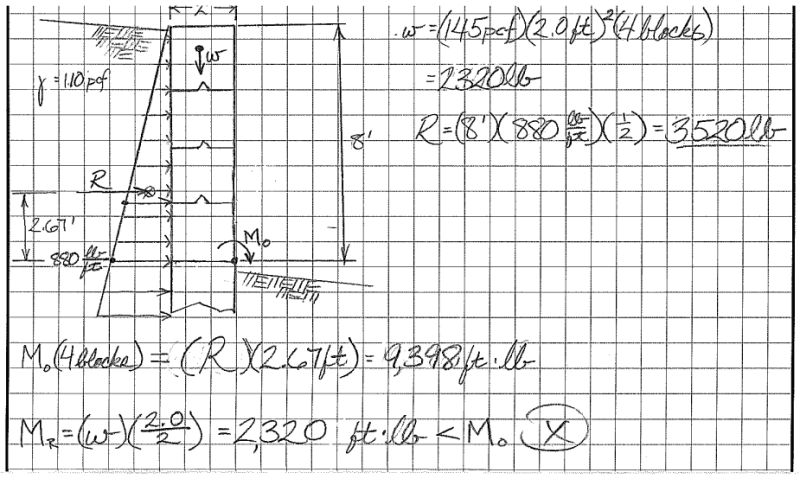I'm designing a retaining wall made of those 2'x2'x6' concrete bin blocks. The client needs it to be 8' tall. You can see in my attached calculation below, I'm coming up with an overturning moment that's way higher than the resisting moment. I've been told by the block supplier and the contractor, "We've been stacking these things four high for 30 years and never had one tip over". I'm sure they're telling the truth, and I have seen walls built that high around town, so I feel like this should work, but my numbers are not backing that up. Did I make a mistake in my analysis?
I was able to make it work if I assume a cohesive soil, (depending on the c value I use), but I've seen these around supporting bins of gravel too.

I was able to make it work if I assume a cohesive soil, (depending on the c value I use), but I've seen these around supporting bins of gravel too.

